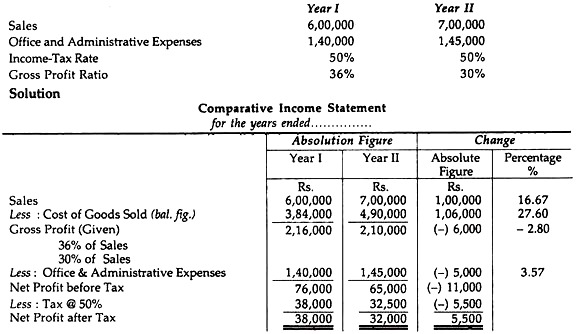
Nonprofits have no shareholders which means they pay no dividends. All the profits they make should be reinvested in the organization to promote its charitable mission. Once an organization receives its nonprofit corporation status, it receives certain benefits from the state, such as not having to pay sales tax or the opportunity to apply for certain types of grants. In other words, a nonprofit organization is not required to pay federal income taxes.

Discover the benefits of early childhood accreditation, learn about the four step process,find support and resources for your program or login to the accreditation portal. When speaking about NPO’s the public spells them many ways. This includes nonprofit, non-profit and also non profit. While it is acceptable to use any of these versions the most widely accepted spelling is nonprofit all one word. Additionally, applying for grants is a great way to raise money for your nonprofit. There are many different types of grants available, so be sure to read the guidelines carefully before you apply.
Support NAEYC
91–172, §§ 101, 121, substituted “part IV” for “part III” after “bookkeeper definitions organized by an association subject to” and added par. Relating to prohibition of discrimination by certain social clubs. 97–248, § 354, substituted “past or present members of the Armed Forces of the United States” for “war veterans” wherever appearing, struck out “veterans , or are” after “individuals who are”, and substituted “or of cadets” for “or such individuals” before “, and”.
For example, an organization could teach homeless individuals how to paint, and later could sell their paintings to others. The income from selling the paintings would be directly related to the exempt purpose of the organization–rehabilitating homeless individuals through painting workshops–and so would not be taxed income. Note that unrelated business income, such as this organization also running a for-profit art gallery , is generally taxed if grossing more than $1,000 annually. If you already run or plan to start a nonprofit organization, chances are good that you have considered filing to become tax-exempt.
- We do not offer financial advice, advisory or brokerage services, nor do we recommend or advise individuals or to buy or sell particular stocks or securities.
- As long as they operate to support their mission, they receive favorable tax treatment, such as avoiding federal income and unemployment taxes.
- Investopedia requires writers to use primary sources to support their work.
- As opposed to public charities, the private foundation may be funded by a small number of donors or even a single benefactor.
They regularly contribute to top tier financial publications, such as The Wall Street Journal, U.S. News & World Report, Reuters, Morning Star, Yahoo Finance, Bloomberg, Marketwatch, Investopedia, TheStreet.com, Motley Fool, CNBC, and many others. Check out this PDF from the IRS to see what the eligibility requirements are for form 1023, and instructions on how to complete it. Form 1023-EZ is a streamlined version of the standard form 1023. However, not every organization can take advantage of it.
How Does Tax Exemption Work?
Many, but not all, nonprofit corporations have a charitable purpose. 501 organizations may engage in political campaign intervention activities so long as such activities do not represent their primary activity. The principal differences between Section 170 and 501 is the requirement in the former that the entity be created or organized in the United States and the absence in the former of a “testing for public safety” purpose. Accordingly, a taxpayer could not take a charitable contribution deduction for a gift to a foreign 501 organization or a domestic 501 organization whose exempt purpose is testing for public safety.
The charitable organization must include its articles of incorporation and provide documents that prove that the organization is only operating for exempt purposes. A public charity is a nonprofit organization that receives a substantial portion of its income or revenue from the general public or the government. At least one-third of its income must be received from the donations of the general public . To remain tax exempt under Section 501, an organization is also required to remain true to its founding purpose.
Additionally, the IRS has specific requirements for these documents, so it’s best to consult a tax attorney or nonprofit expert (like us!) if you want to make sure your bylaws meet those standards. So in addition to raising money for a particular cause, as long as the organization has a recognized charitable purpose, it may be eligible for some tax benefits. For example, a local animal shelter that might use donations to help pay for food, medical care, and other necessities for homeless animals, may be able to deduct volunteer hours and medical goods donated.
Organization
Typically, unincorporated nonprofit associations exist to serve temporary needs. The nonprofit corporation definition is an organization that is legally incorporated and also recognized by the IRS as tax-exempt based on business activity. The vast majority of nonprofits are classified as 5013 organizations by the IRS. However, that is not the only designation for a nonprofit. Are there any negatives to being a registered 501c3?
Kelly is an SMB Editor specializing in starting and marketing new ventures. Before joining the team, she was a Content Producer at Fit Small Business where she served as an editor and strategist covering small business marketing content. She is a former Google Tech Entrepreneur and she holds an MSc in International Marketing from Edinburgh Napier University. The “Expenditure Test” column applies to organizations that HAVE filed the IRS Form 5768, also known as the 501h election. There are two different ways to determine “substantial part.” One if through the substantial part test which is looking at the facts and circumstances, and the second is through the expenditure test, which requires the filing of a 501 election and is based upon a mathematical formula. Join your professional membership association, explore local Affiliates, and access unbeatable member benefits.
Form Over Function? Reviewing the UN Global Counterterrorism … – The Soufan Center
Form Over Function? Reviewing the UN Global Counterterrorism ….
Posted: Thu, 16 Feb 2023 08:00:00 GMT [source]
Generally income from an unrelated trade or business regularly conducted by a 501 is subject to the “unrelated business income tax.” As noted, when an unrelated trade or business constitutes the primary purpose of a 501 organization, its tax-exempt status is jeopardized. 501 groups are sometimes referred to as “nonprofits.” This can be a source of confusion, because all U.S. states allow certain corporations to register as “not-for-profit” corporations. To receive “not-for-profit” status, an organization must incorporate with an individual state and pay the filing fee. 501 status, however, refers to the organization’s federal tax exempt status; this is issued separately from state-level not-for-profit status and is handled through the IRS rather than an individual state. Thus, an organization may be a not-for-profit corporation under the laws of the state in which it is incorporated but not have federal 501 status.
Helping nonprofits and foundations to advance their mission and serve their communities through advocacy. An organization is operated exclusively for the promotion of social welfare if it is primarily engaged in promoting in some way the common good and general welfare of the people of the community. An organization embraced within this section is one which is operated primarily for the purpose of bringing about civic betterments and social improvements.
Many nonprofits that are covered by Section 501 of the Internal Revenue Code are 501 organizations. This is the most common type of organization, and it can be a charitable nonprofit, a public nonprofit, or simply a charity. Members receive unlimited access to our archived and upcoming digital content.
501(c) Organization: What They Are, Types, and Examples – Investopedia
501(c) Organization: What They Are, Types, and Examples.
Posted: Wed, 03 Aug 2022 07:00:00 GMT [source]
Each grant has its own eligibility requirements and application process. You’ll need to make sure that you meet all of the requirements before you apply. After you’ve chosen a name, you’ll need to define your nonprofit’s mission, vision, and values.
The organization must benefit the entire community, not select populations or groups within the community. For example, it cannot benefit only member-tenants of one apartment. It can, however, operate to promote the legal rights or social welfare of all tenants in a community. A volunteer fire department is an example of a 501 eligible organization. A 501 organization is subject to heightened restrictions on lobbying activities, A 501 organization may engage in some lobbying, but too much lobbying activity risks loss of tax-exempt status.
A family foundation is an example of a private foundation. 501 refers to a section of the U.S. federal income tax code concerning charitable, religious, and educational organizations. Organizations that have been granted 501 status by the Internal Revenue Service are exempt from federal income tax.

Then such organization shall be treated as an organization organized and operated exclusively for charitable purposes. For purposes of this subparagraph, the term “qualified subsidiary” means any corporation if, at all times during the period such corporation was in existence, 100 percent of the stock of such corporation is held by the corporation or trust described in subparagraph . All assets, liabilities, and items of income, deduction, and credit of a qualified subsidiary shall be treated as assets, liabilities, and such items of the corporation or trust described in subparagraph .

96–222, https://1investing.in/ out as an Effective Date of 1980 Amendment note under section 32 of this title. The requirements of section 501 of the Internal Revenue Code of 1986, as added by subsection , shall apply to taxable years beginning after the date which is 2 years after the date of the enactment of this Act. The organization receives no amount for providing referrals to others for debt management plan services, and pays no amount to others for obtaining referrals of consumers.
In support of their missions, the U.S. government grants these organizations exemption from federal income tax and unemployment tax. A 501 nonprofit is a nonprofit organization that the Internal Revenue Service recognizes as tax-exempt because it is organized or operated primarily for religious, charitable, scientific, educational, or similar purposes. However, the organization may participate in minor, non-exempt activities as long as they do not make up a substantial part of its activities. Internal Revenue Code that corresponds to a distinct category of nonprofit organizations. An organization that has a 501 distinction isn’t required to pay federal income taxes. Some groups may be considered tax exempt organizations under 501 without having to file Form 1023.
Incorporating your nonprofit and filing for 501c3 status are the two most important steps. Once you’ve done that, you’ll need to comply with annual reporting requirements and maintain compliance with all applicable laws and regulations. There are many different types of grants available. You can find federal grants, state grants, and private foundation grants. And one of the best ways you can find grant opportunities is through grant management software like Instrumentl.
